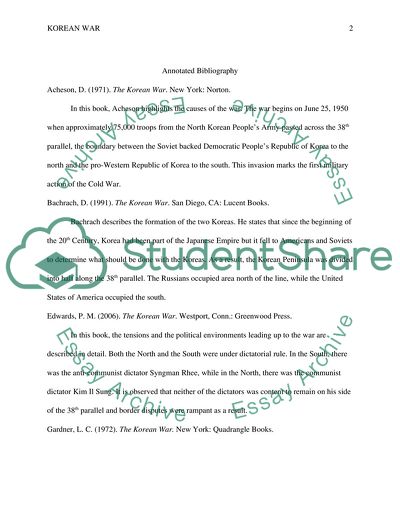Korean War Annotated Bibliography Example | Topics and Well Written Essays - 500 words. Retrieved from https://studentshare.org/history/1637714-korean-war
Korean War Annotated Bibliography Example | Topics and Well Written Essays - 500 Words. https://studentshare.org/history/1637714-korean-war.


